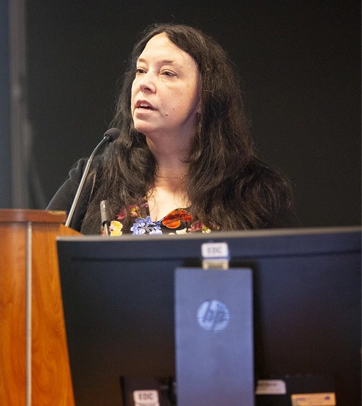


Salvage radiotherapy (SRT) is a potentially curative therapy for many men experiencing a biochemical recurrence after radical prostatectomy. The addition of hormonal therapy (HT) to SRT has been shown to improve metastasis-free survival (MFS) in both the NRG/RTOG 96-01 trial (which used two years of bicalutamide, a first-generation androgen receptor antagonist, and generally enrolled patients receiving late SRT) and the GETUG-016 trial (which used six months of goserelin, a gonadotropin releasing hormone receptor agonist; in this trial, MFS was retrospectively determined). NRG/RTOG 0534 also showed a benefit in the earlier endpoint of freedom from progression (using a high PSA threshold to define this) with four to six months of HT. Most recently, the dual two-way randomizations from the RADICALS-HD trial showed that (a) adding six months of HT failed to improve MFS and (b) prolonging HT from six months to 24 months improved MFS. Taken altogether, these trials suggest that adding a short course of HT to SRT (four to six months) may not improve MFS, while using long duration HT (24 months) may improve MFS. Any potential benefit from long-term HT must be evaluated alongside the numerous adverse effects that HT brings with it. Indeed, given this significant toxicity burden, alternative strategies of improving outcomes have been investigated, such as systemic intensification of HT with androgen receptor signaling inhibitors with a short total duration of medications.
Karen E. Hoffman, MD, FASTRO, presented the long-term patient-reported health-related quality of life data from the randomized FORMULA-509 trial, which randomized 345 men receiving salvage radiotherapy and six months of ADT to receive either bicalutamide or abiraterone acetate plus prednisone and apalutamide. The median age of enrollees was 64 years, the median PSA was 0.3, and 74% received concurrent pelvic nodal radiotherapy. A prior report suggested that among patients with a PSA >0.5 ng/mL, the three-year rate of MFS was improved from 66.1% to 84.3% with systemic therapy intensification. In the overall population, three-year MFS rates were 87.2% vs 90.6%. As expected, intensification also increased the incidence of adverse events, including maculopapular rash and hypertension. However, patient-reported outcomes can be quite different than physician-scored toxicity.
The new data shed light upon the impact of systemic intensification from the patient perspective. All patients received Expanded Prostate Cancer Index Composite (EPIC)-26, PROMIS fatigue, and Saint Louis University Mental Status Exam (SLUMS) at baselines, end of therapy, and at one and three years after completion of therapy. Compliance with these were 57%, 57%, and 34%, respectively, at the three-year time point. There was no difference in patient-reported hormonal function, fatigue or mental status between treatment arms, at end of treatment, one year after treatment, and three years after treatment. From the baseline to the end of the treatment, patients in both arms had clinically meaningful declines in the EPIC-26 hormonal domain and increases in the PROMIS fatigue. Thereafter, hormonal function recovered incrementally through the one-year and three-year timepoints, while fatigue improved through the one-year time point but remained stable thereafter. However, the median fatigue scores at one and three years were all within the minimally clinically important different threshold from baseline. Cognitive scores did not change significantly from baseline at any timepoint in either arm. A separate abstract focused on testosterone recovery and found that the 24-month incidences of testosterone recovery were similar in both arms (77.7% without the intensified medications vs. 86.4% with the intensified medications).
These results are of critical importance, as they provide reassuring context with which to interpret the oncologic benefits of systemic intensification. Specifically, as mentioned before, the results should be contextualized with the recent report of the RADICALS-HD trial, which included a two-way randomized comparison between patients receiving salvage radiotherapy and six vs. 24 months of androgen deprivation therapy (with or without bicalutamide). In this study, 10-year MFS was improved from 71.9% to 78.1% with the prolongation of ADT; the hazard ratio for this improvement was 0.77. For FORMULA-509, the overall hazard ratio for intensifying systemic therapy was 0.57, and in the subgroup of patients with PSA>0.5, it was 0.32. Given the lack of worsened patient-reported outcomes, and the oncologic benefits, systemic therapy intensification for a shorter duration may be a more attractive strategy than ADT prolongation for men with aggressive disease features. Unanswered questions of interest include the applicability of these data to men who receive advanced molecular imaging to evaluate for nodal or extrapelvic disease prior to salvage radiotherapy, the use of biomarkers to identify patients who might benefit the most from intensification, and whether dual-agent androgen receptor signaling inhibition is necessary rather than single-agent intensification.
Abstract 181, Long-Term Patient-Reported Health-Related Quality of Life in the Randomized FORMULA-509 Trial of Salvage Radiotherapy and 6 Months of GnRH Agonist with Either Bicalutamide or Abiraterone Acetate Plus Prednisone and Apalutamide after Radical Prostatectomy, was presented during the SS 15 - GU 3: Prostate Cancer Treatment Intensification session of the 66th ASTRO Annual Meeting.